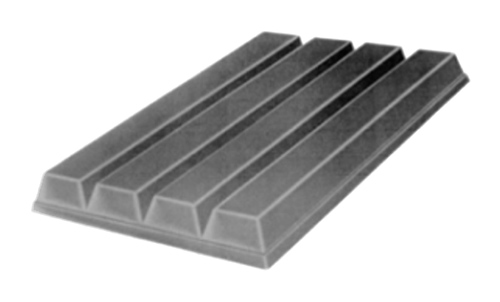CJEU on the Kit Kat shape and acquired distinctiveness of EU trade marks for shapes

On 25 July 2018, the CJEU handed down its ruling in the latest edition of the battle between Nestlé and Mondelez over the KIT KAT shape (C-84, 85, 95/17 P). This time, the discussion focused on whether a non-traditional EU trade mark that is not inherently distinctive must be shown to have acquired distinctiveness in the EU as a whole, or in every single Member State. The ‘reliance’ factor discussed in the UK case (see also here and here in this blog) was not in issue, as the General Court had confirmed that acquired distinctiveness had been shown to exist in 10 of the 15 relevant Member States (the KIT KAT mark is from 2002, pre-EU expansion).
The CJEU confirmed what was settled General Court case law all along, namely, that acquired distinctiveness had to be shown wherever the mark at issue was not inherently distinctive. For shape marks, that means ‘throughout the Member States of the European Union’ (para. 83).
The view whereby, for assessing acquired distinctiveness, the EU must be treated like a single market, irrespective of country borders, and that it should therefore suffice to prove acquired distinctiveness for a ‘substantial part’ of the Union, has been put to rest. While unfortunate for EUTM owners of potentially affected marks, the result is less than surprising. Nestlé and the EUIPO had derived hope from the CJEU’s obiter dictum from 2012 in Chocoladenfabriken Lindt & Sprüngli (the Gold Bunny case, C-98/11 P), whereby ‘it would be unreasonable to require proof […] for each individual Member State’. However, the Court explained this away by saying that one must distinguish the facts to be proven (acquired distinctiveness everywhere in the Union) and the means of proving them (para. 79).
Both sides claimed support from the unitary character of the EUTM. On the one hand, a unitary view of the EU as a single market should allow recognition of the acquired distinctiveness of a mark in the EU when rock solid evidence of this has been submitted for 90% of its population, as was the case here, missing out only on Greece, Portugal, Ireland, and Belgium. On the other hand, due to its unitary character, the EUTM is enforceable everywhere, which means that it must be valid everywhere. This was ultimately given greater weight by the CJEU.
The silver lining is that the Court says that ‘it is not inconceivable that the evidence […] is relevant with regard to several Member States, or even to the whole of the European Union’ (para. 80). Evidence of long-standing use and global fame of a shape (or colour etc.) or evidence of regional sales and brand promotion remain valid and convincing and, if not sufficient on their own, should therefore contribute to an overall favourable picture.
From a procedural perspective, it is interesting to note that Mondelez’ appeal was found inadmissible, because Mondelez had won before the General Court. The Board of Appeal decision whereby the shape mark had acquired distinctiveness in the EU was annulled. Mondelez’ appeal was not directed against the operative part of the GC judgment but only against the grounds. The CJEU sets out that only those parts of a GC ruling that are ‘inseparable from’ the operative part are binding on the Board of Appeal. So that would be the finding that the mark must be shown to have acquired distinctiveness in every single Member State, but not that Nestlé had proven use of the shape mark as an indicator of origin, and that acquired distinctiveness had been shown in 10 Member States.
Finally, a trivia: acquired distinctiveness was confirmed for 10 Member States and said to be absent in 4. So, which is the missing country? It is the Courts’ very own Luxembourg, which is not addressed in either the CJEU or the GC judgment. As per the Board’s ruling, it belongs to the group of the 4. Nevertheless, on return of the case from Luxembourg to Alicante, this tiny Member State may deserve special attention…


